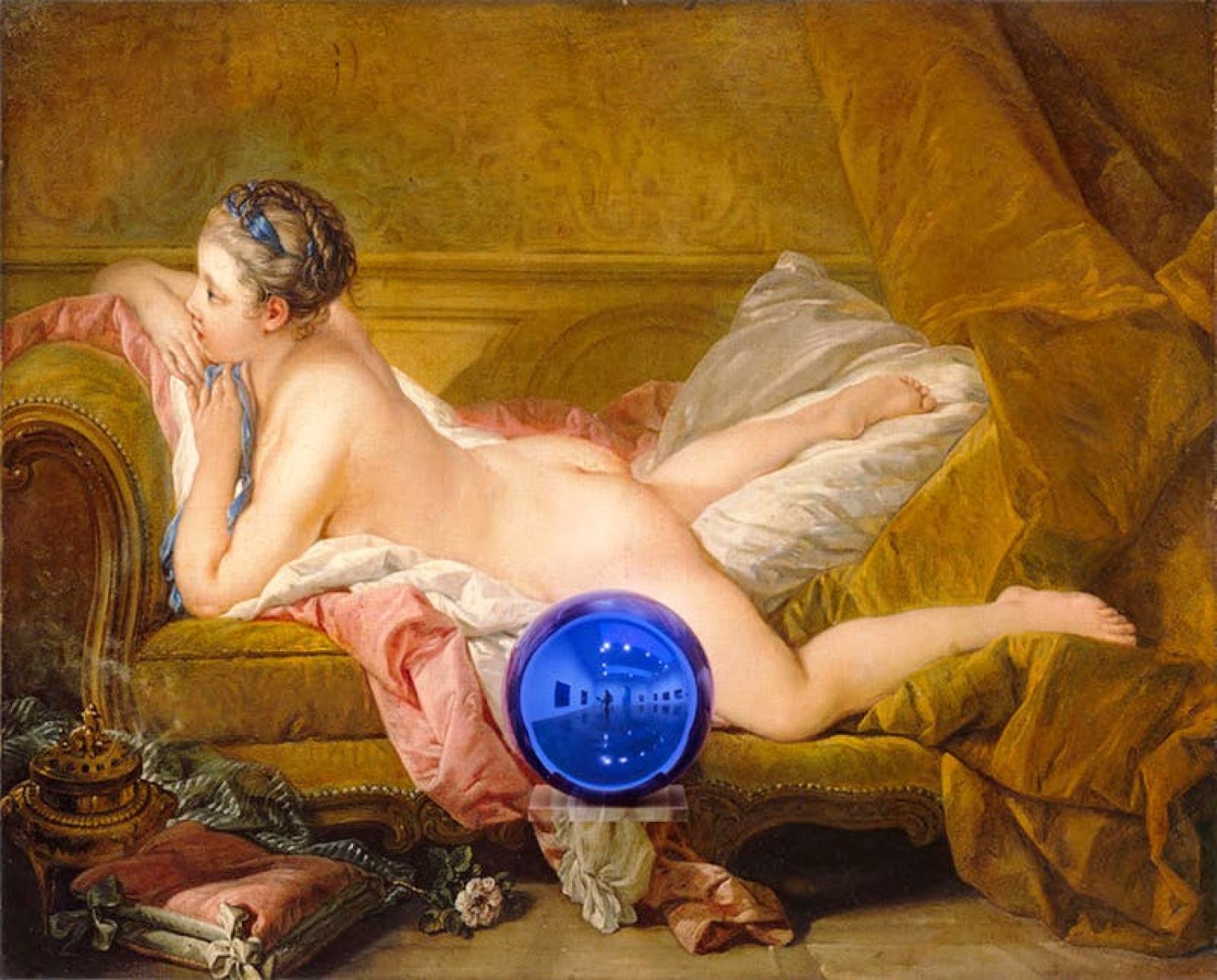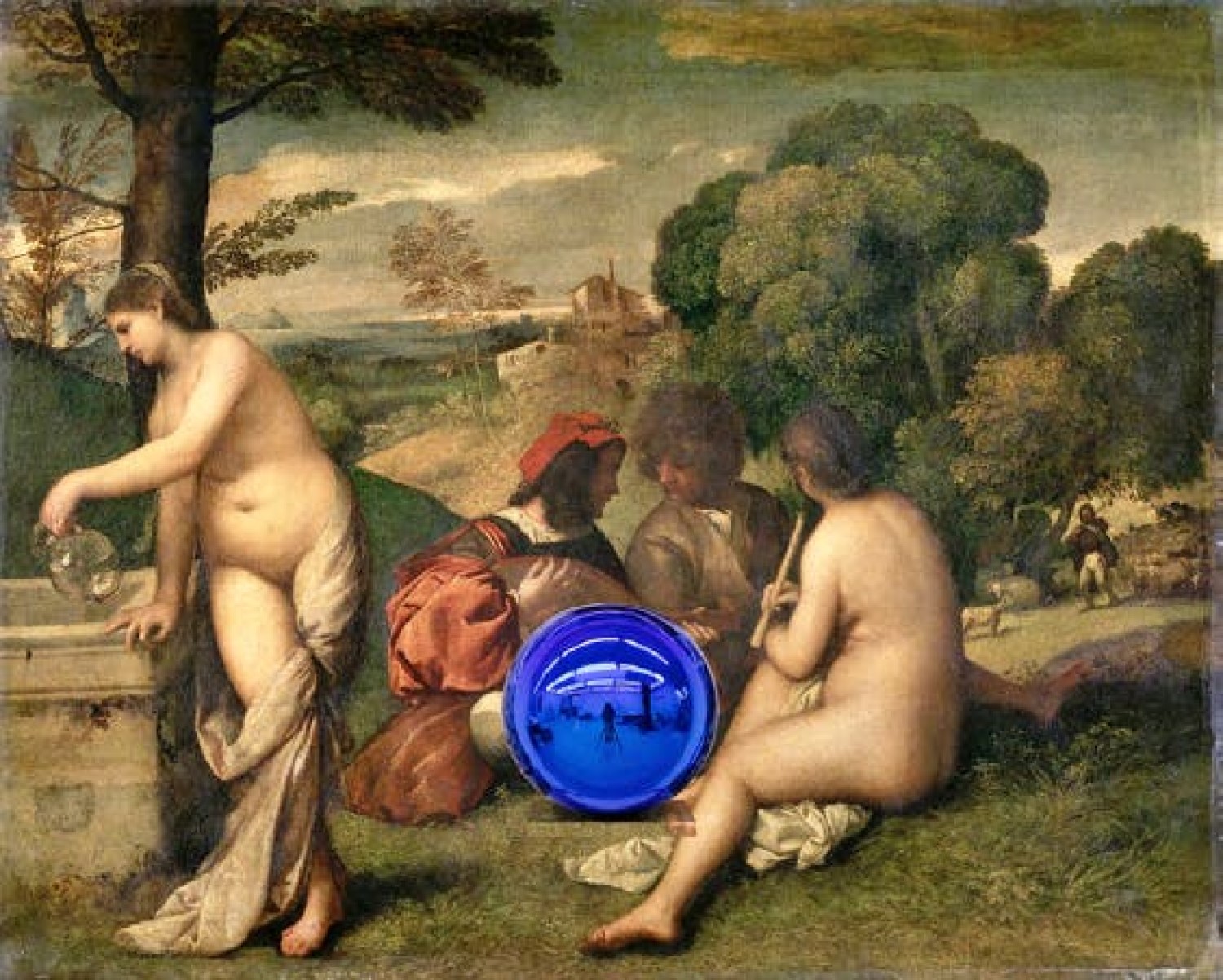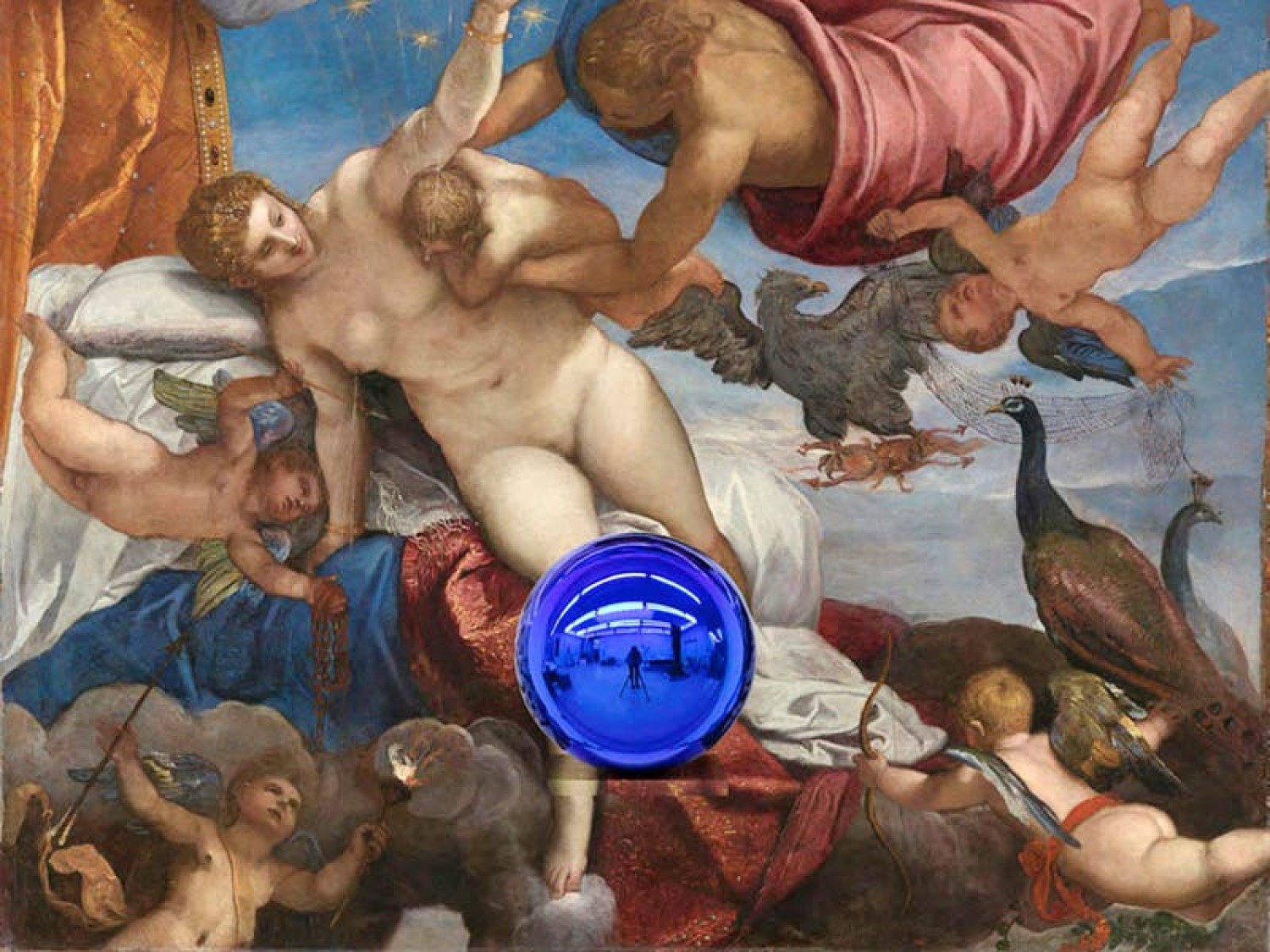
Jeff Koons has been producing shiny things for his entire career. When he transformed from eighties American stockbroker with an art education into a successful artist who made the sort of thing eighties American stockbrokers would want to own, these shiny things were huge sculptures in stainless steel and porcelain. Balloon animals. Vacuum cleaners. Michael Jackson and his monkey, Bubbles. Then he depicted himself and his shiny porn star wife. The stockbrokers paid and paid.
It wouldn’t be until the second decade of the twenty-first century, though, that his expensive works became genuinely rich. Begun in around 2013, Jeff Koons’s Gazing Ball series couples fake Old Master paintings—delicately and expensively reproduced by his studio of assistants, right down to their surface texture—with metallically blue glass balls of the same quality of Koons’s other sculptures. Every element is shiny: the preferred chocolate-box colour schemes of the Bouchers and Giottos and Poussins, the reputations of the originals, the care taken; the spheres themselves, which rest on a concealed shelf in front of each canvas.

They reflect the painting and reflect the room, giving the impression that the gallery goer—or, preferably, whole crowd scenes of gallery goers—are artificially part of art history, just as Koons is artificially imprinting himself onto art history. They beg to be looked into, smartphone in hand. (In the case of his Mona Lisa version, seeing your own image as part of it, phone in hand, is perhaps a more accurate representation of the experience of seeing the Mona Lisa today than it is to see the actual Mona Lisa.)
Koons intended this series of works to appeal to and engage the modern viewing public more than ever. How to do that? Show them themselves. Give them something they can take a picture of, and then possibly never look at again. These are true contemporary classics. One such work—his Perugino Gazing Ball—made headlines last April because it engaged the public too much, smashing when a gallery goer reached out and touched it.

But more than this, there is an aspect of the artist’s own personality available here. This has been previously unknowable beyond the (deserved) cliches that are obvious: that he is acquisitive, materialistic, popularist, etc. When Koons was growing up in Pennsylvania, he would himself attempt repercussions of Old Masters in oils, which his father would then attempt to sell. What? Is that a shred of heart in the works, too, along with a network of allusion that actually functions? Say what you like about Koons. In the Gazing Ball works, he has become rich, not just expensive.





